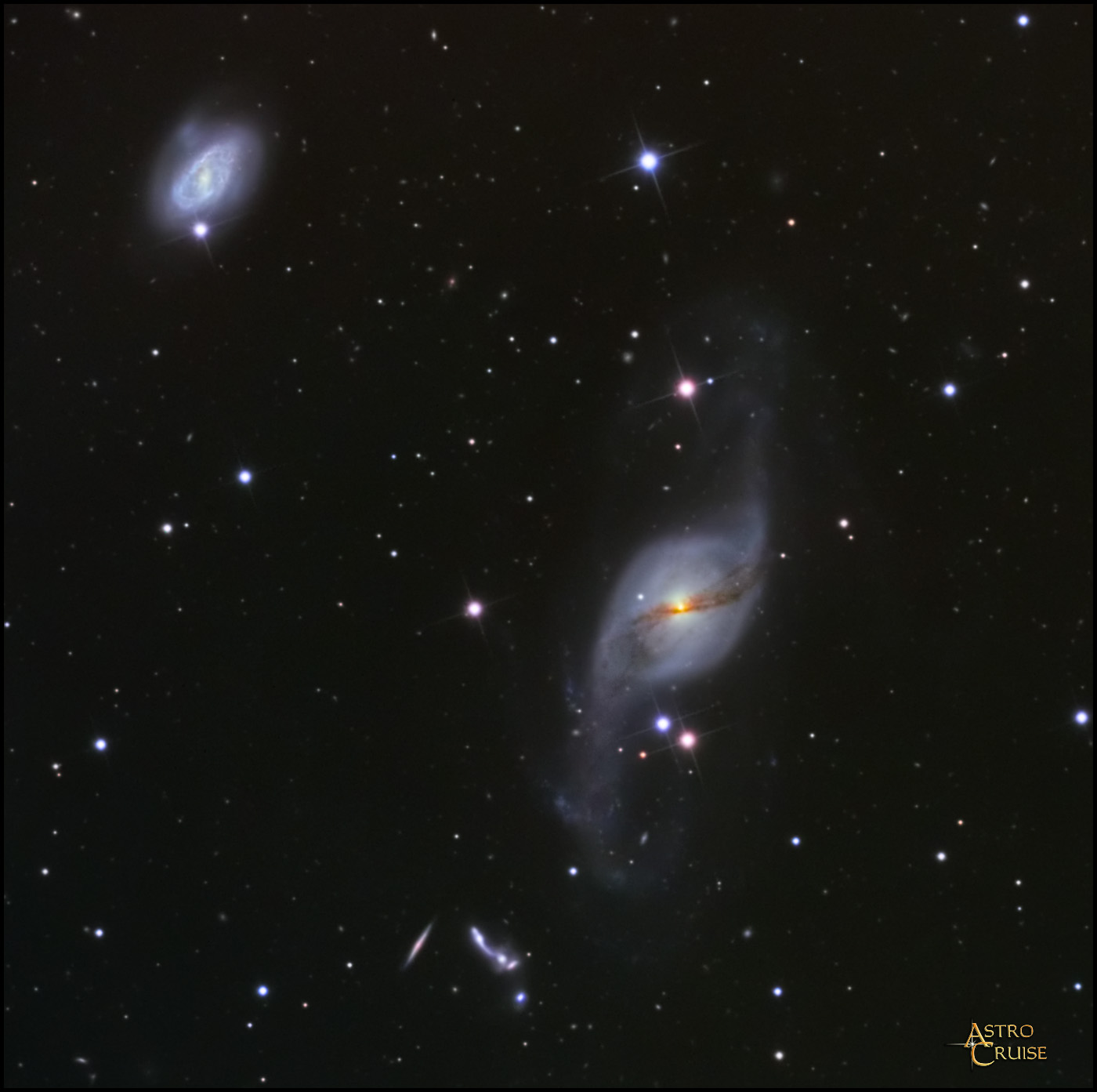
 |
Object data: NGC 3718 is an interesting and unusual galaxy in Ursa Major with an apparent magnitude of 10.5. Note the unusually symmetrical dust lane bisecting the nucleus. Graceful spiral arms extend by almost 9 arc minutes to the north and south, due largely to gravitational interaction with its barred spiral companion, NGC 3729, to the north-east (top left). Also the interesting galaxy quintet designated Arp 322 can be seen to the south of NGC 3718. The individual galaxies were catalogued by Hickson and are designated Hickson 56A on the left through Hickson 56E on the right. Strong gravitational interaction can be seen between the central three galaxies.
Date: 16/03/10 & 17/03/10
Location: Southern France
Conditions: Good but periods of poor seeing, transparency=8, seeing=7
Optics: RCOS 12.5" Ritchey-Chretien with custom field flattener working at f/9.5
Mount: AP 900 GTO on Portable Pier
Camera: SBIG STL-11K, SBIG LRGBC filter set, -30°C
Guiding: Integral STL-11K autoguider
Exposure: LRGB Seq: 21x 20 minutes; 3x 20 : 13 : 20 minutes (binned 2x2).
Processing: Image acquisition, calibration, combining, and DDP were done using Maxim DL, registration of Luminance and RGB images was done using Registar, and final processing was done in Photoshop CS4.
Notes: This image replaces my image of NGC 3718 taken in 2007 from southern France - click here to see it. I was hoping to do much better than the earlier image but I am not so sure - during the early evening when I took the luminance frames I recorded: "Conditions apparently stable but frequent 'bursts' of poor seeing - very unusual". Also there is a striking difference in how I processed the two images and I am not sure the later image is necessarily an improvement!
Unlike the images of M101 and M51 taken during the same trip, I did have to flip the mount - I had to start with the telescope on the west (correct) side of the mount when I started this image in the early evening because it was impossible to get to the object otherwise. I flipped the mount after about two hours and lack of orthogonality was no problem as described in this new article.
|
|
|
|